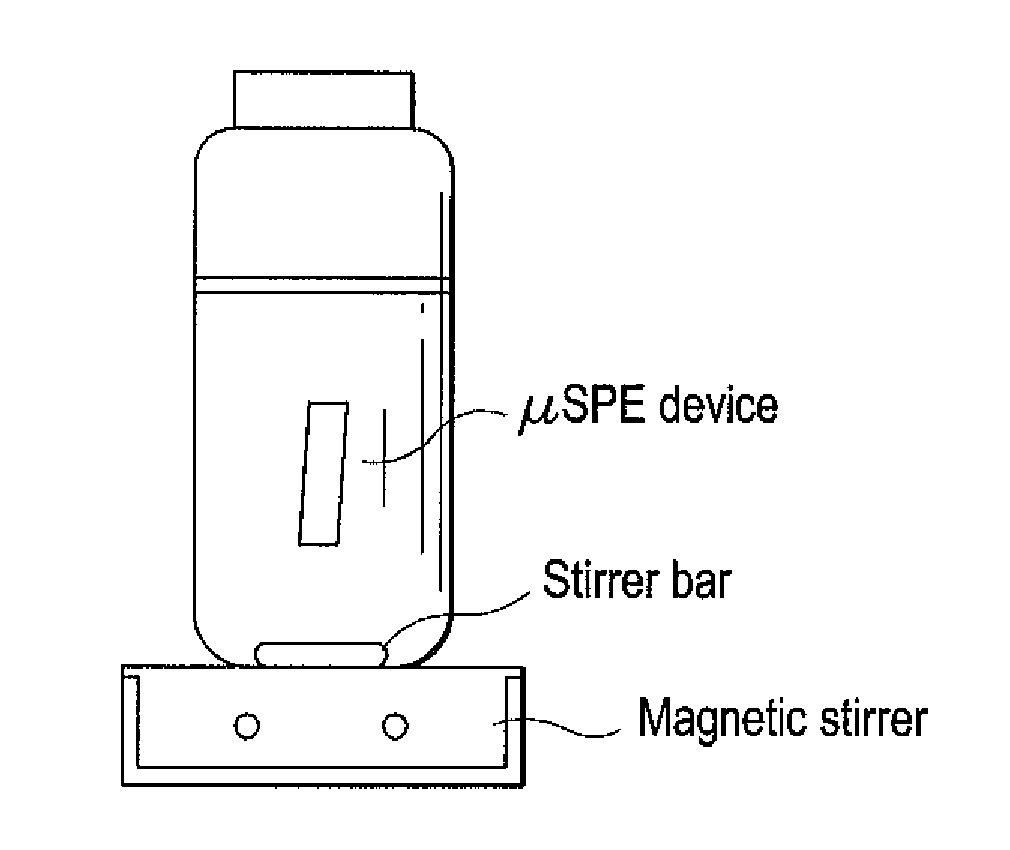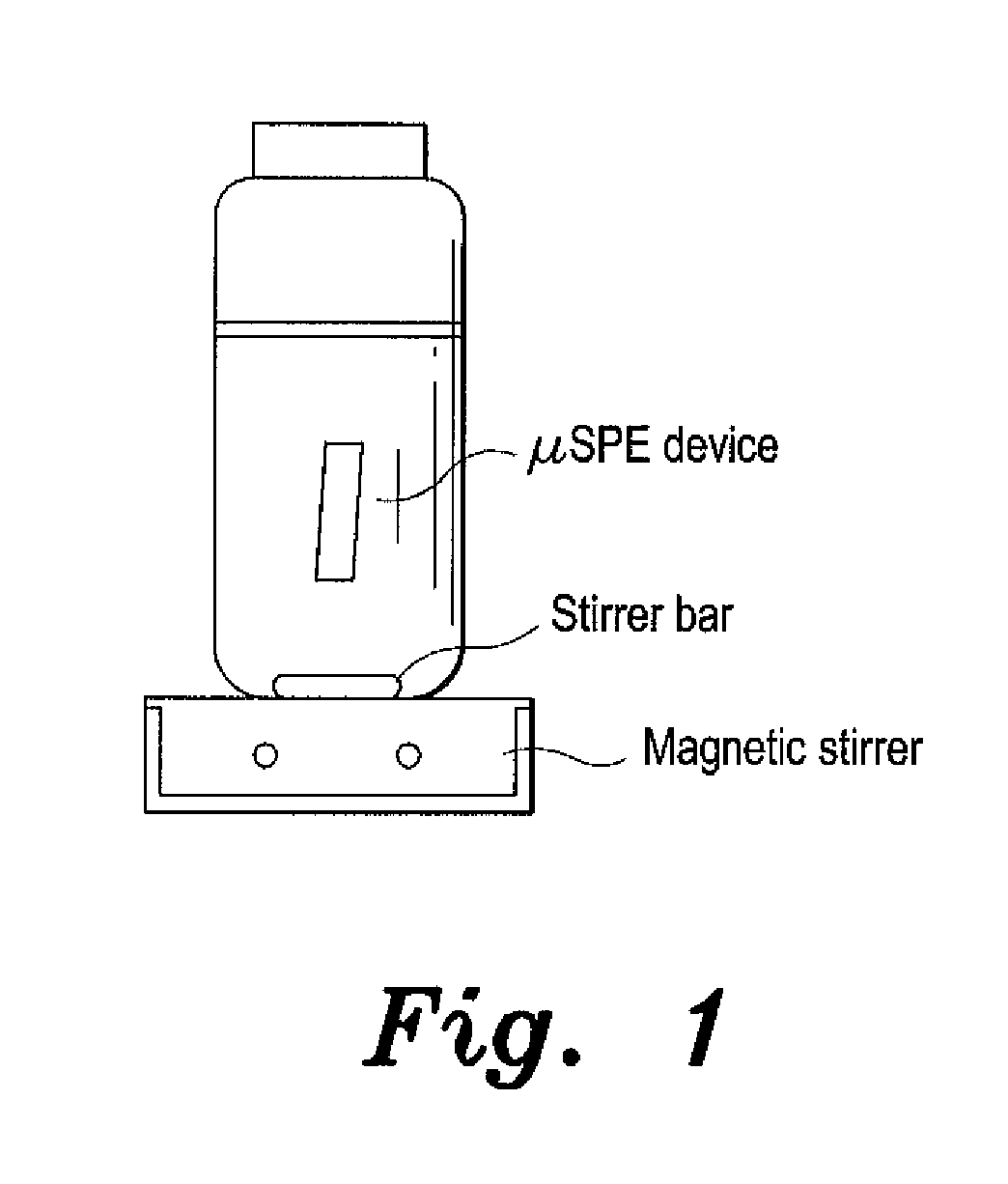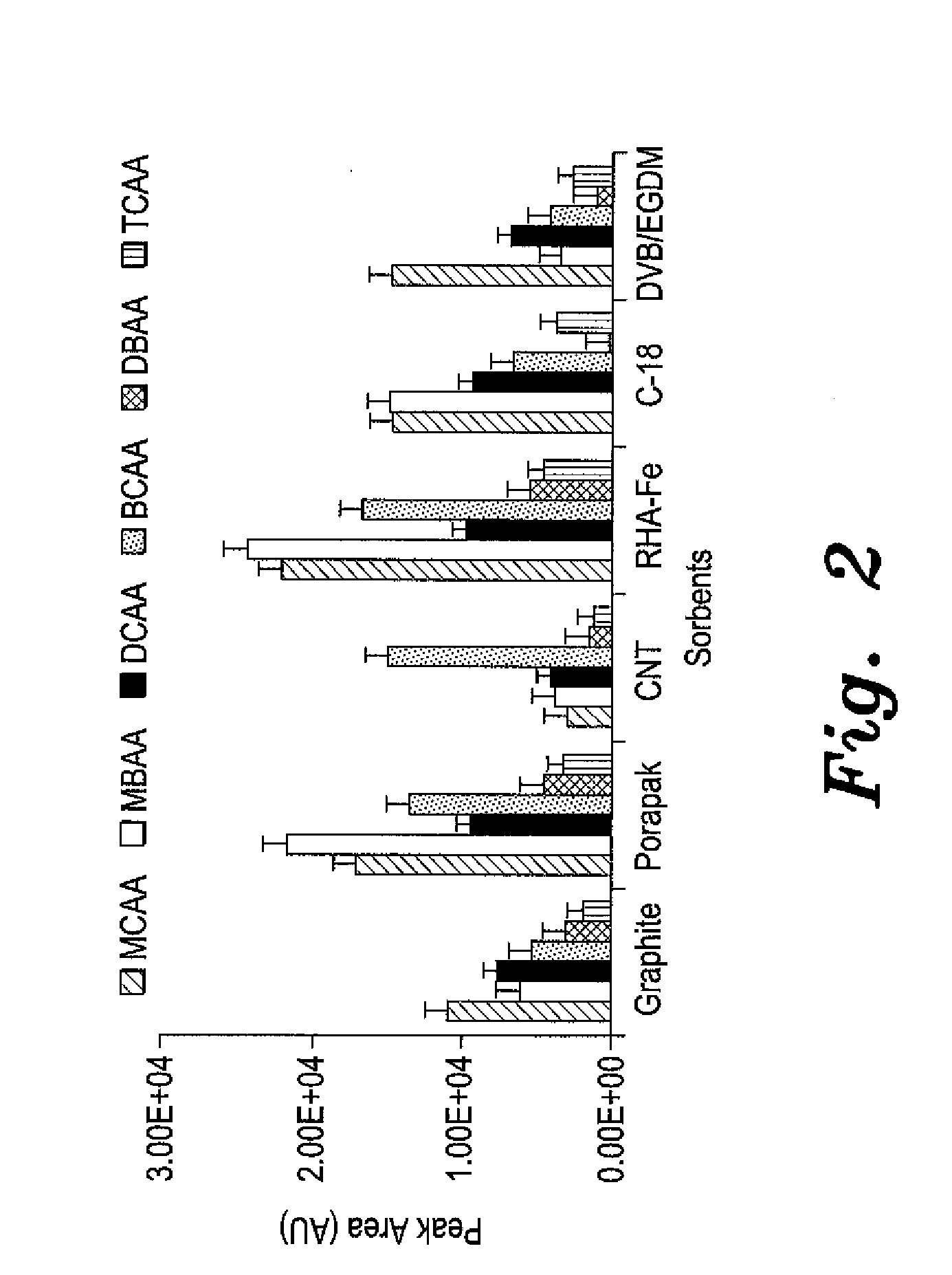Micro-solid phase extraction of haloacetic acids
- Summary
- Abstract
- Description
- Claims
- Application Information
AI Technical Summary
Benefits of technology
Problems solved by technology
Method used
Image
Examples
example 1
Preparation of Iron-Modified Rice Husk Sorbent (Silica-Fe)
[0018]Rice husk waste was modified to silica-Fe using the sol-gel process. Rice husks RH were washed with a plenteous amount of distilled water. The cleaned sample was then air-dried and incinerated at a temperature of 700° C. in a muffle furnace for 6 hours to form a white powder. The powder was treated with 1.0 M HNO3 for 24 h, filtered, and washed with deionized water until a pH value of 5.6 was obtained to form rice husk silica. The silica was oven-dried at 110° C. overnight. About 5.0 g of RHA was added to 250 ml of 6.0 M NaOH, stirred for 12 h, and filtered to remove un-dissolved material. 3.6 g of cetyltrimethylammonium bromide was added into the resultant sodium silicate solution and stirred until complete dissolution. The filtrate was titrated with 10% Fe3+ solution [3.62 g Fe (NO3)3.9H2O dissolved in 200 ml of 3.0 M HNO3] until pH 8 was reached. Drop-by-drop titration followed until pH 5 was finally obtained. The ge...
example 2
Preparation of μ-SPE Extraction Device
[0019]The porous polypropene membrane serves as a filtering device and prevents particulates and humic substances from complex sample matrices adsorbing on the sorbent. This improves the sensitivity of the extraction. The membrane envelope was made from two overlapping sheets whose open edges were heat-sealed. One of the two open ends was then heat sealed. A cut glass tube was used to introduce 20 mg of sorbent material through the remaining open end, which was later heat sealed to secure the contents in a 1.5 by 0.5 cm. dimension envelope. After successful packaging, the device was reweighed to ensure consistency in weight measurements. Each prepared device was conditioned in acetone for 10 minutes, dried, and then placed in 20 mL of ultrapure water in a glass vial containing a magnetic stirring bar. Without adjusting pH, temperature and salt concentration, the water sample was agitated on a vortex at a stirring speed of 700 rpm for 20 minutes ...
PUM
| Property | Measurement | Unit |
|---|---|---|
| Fraction | aaaaa | aaaaa |
| Fraction | aaaaa | aaaaa |
| Fraction | aaaaa | aaaaa |
Abstract
Description
Claims
Application Information
 Login to View More
Login to View More - R&D
- Intellectual Property
- Life Sciences
- Materials
- Tech Scout
- Unparalleled Data Quality
- Higher Quality Content
- 60% Fewer Hallucinations
Browse by: Latest US Patents, China's latest patents, Technical Efficacy Thesaurus, Application Domain, Technology Topic, Popular Technical Reports.
© 2025 PatSnap. All rights reserved.Legal|Privacy policy|Modern Slavery Act Transparency Statement|Sitemap|About US| Contact US: help@patsnap.com



